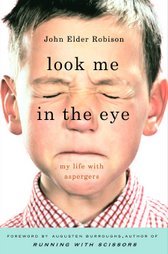This assignment is about characterization, how you reveal who Anne is as a person through narration, dialogue and action.

In this first passage, it’s not just narration about Anne that we’re looking for, it’s narration that provides specific details of her appearance, her background or how she thinks about other characters, her life situation, her goals, etc. Much of this passage is you, the author, TELLING us about Anne, instead of getting into Anne’s head and letting her reveal herself to the reader. Our lecture addresses this. How about putting Anne in a scene and showing us her fashionable navy pants and her matching cardigan as she moves around the setting? Instead of TELLING us about her “hard emotional shell,” how about SHOWING us as she thinks about another character or a situation in her life? Again, instead of TELLING us about how she’s a reliable worker, SHOW us. This isn’t to be a profile, it’s to put Anne in a scene and let the narration come from inside of her as the viewpoint character. And when narrating, you want to focus on just one aspect of who a character is, the aspect that is relevant to the conflict in the scene that you’re developing.
In the dialogue study, what’s important is what Anne says and how she says it. What I see here right away is Anne’s courage. She’s not willing to act like a “girl,” waiting to be rescued by a “boy.” Her dialogue continues to speak of her courage until the end of the scene. She’s also able to tease her friend without putting her down. She doesn’t take things too seriously. What strikes me is that her heart IS beating wildly, and so she does have fear that she’s willing to feel but also to overcome as she moves into the musty room.
In the action scene, I’m looking for gestures, movements, mannerisms, facial expressions, not just meaningless action. Remember, this is about characterization. She needs the room to feel warm again, and so she turns on the lights. You mention her irritation as she finds items out of place. Would you say that her efforts to align the chairs is characteristic of her need to be organized? Is this significant? I want you to think consciously about Anne’s actions, so that we can begin to visualize this character.
I'm still trying to figure out what I did wrong based on the assignment. And once again, I feel......











10 comments:
AW--Don't think of this as a right/wrong situation. What you've written is useful to you. It's not inherently bad.
For the narration exercise...consider placing the character in a situation. How about situating her in a performance review? Does she tug at her clothes when she's uncomfortable? How does her boss describe her work? How does she physically react when she hears criticism...or praise?
The other pieces struck me as realistic...I think the dialogue exercise reveals her character nicely.
The action scene could perhaps have involved more critical action. She's a "mother hen," but try placing her in a more tenuous situation.
And don't feel bad. You haven't done anything wrong!
I was going to say almost everything that precie has said here -- and then I found that she had said it first! She is right: this isn't a right/wrong situation; this is more a case of making your work even more 'right.'
I love the idea of having Anne fussing with her clothes, flinching at someone's criticism or worrying her lower lip over some remembered comment she didn't like. All of those little details will give us a good picture of what kind of person she is.
And once again, I have a couple of chapters I can rewrite, based on this advice. Keep it coming, please!
I think what s/he's looking for is more internal narrative. Show vs tell is one of the toughest things to master, because frankly, we're telling ourselves the story. But here, in your first piece, while you describe her, there's no sense of story. It's like she's a mannequin. We need to see her in action to get a true sense of who she is.
For instance, someone wants to introduce you to a guy. She says:
"He's hot, has a nice car, loves to lift weights and he's close to his mother." And then you meet the guy and learn he's all that, but he talks incessantly about his overbearing mother. That's the difference between showing and telling: someone talking about a person verses actually meeting them.
All that said, these peices of the sort you did are very useful. I write characters scripts (for description) like these for all my characters--even walk-ons. I tell myself about them. Then I decide, while writing the book, how to show what I've told myself. For instance, he habitually likes to white-lie so I let the reader or another character catch him in a lie rather than just saying it via narrative.
This is so gutsy of you to post all this. Kudos!
AW,
I think he just wants you to make it tighter. I don't think he meant that it was wrong or anything. We all go through a ridiculous amounts of editing until we're done. Hang in there! ;*)
Critique's a pain in the butt. I hate it. But it usually makes me a better writer. You've got a great character, it's just a matter of going deeper into her inner workings. The instructor gave great feedback, he's obviously seeing a lot in the character, now it's just pulling it out from her own experience rather than yours. That is the hardest thing for me - getting inside my character's head and not narrating. I wonder if that's why so many people do 1st person, maybe it makes things easier to slip into character.
Keep on, you're doing great!
Hi Anti-wife:
What you wrote is probably deeply valuable for you to learn about your character. My guess is what the instructor is seeking is more the PROPULSION of story. Nothing in what you told us MOVES us forward--it's what writers call the back story. And most of the time, we can learn what we need to know over the course of an entire book or short story, through actions and dialogue, through body language, through interactions with others. It's like . . . you seem to know this character very well, and you've handed us--very well, actually--all we need to know. But instead, the instructor and reader would want to see movement, to let it unfold rather than having it all presented up front. It's about the story you have to tell. And that story is an "active" thing, not the back story.
But the good news . . . is you are digging deeper and learning who she is, and that is going to be so valuable as you tell your story.
Don't be discouraged . . . . :-)
E
Precie,
Thanks for the info. I'm going to try to redo the narration part based on all the feedback.
Mary,
I'm always happy to make mistakes for the group. We whould all learn from each other.
Betsy,
Thanks for the feedback. I've always been a gutsy broad.
Demon,
I think she's just mean, but then I'm a bit prejudiced right now.
Kat,
I hate critiques although I know they will make me a better writer. Being imperfect sucks!
Erica,
My discouragement is fleeting and it'll be gone soon. I really need to look at this from a different perspective. Your post on staying centered today was a great reminder.
It's very generous of you to share this. We never stop learning, and I know that I'll approach the writing more consciously instead of writing by the seat of my pants as I tend to do.
Post a Comment